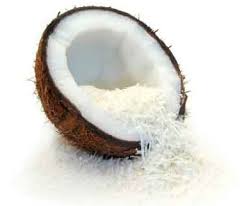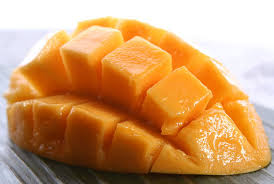Mangosteen, a type of fruit that comes from a tropical evergreen tree originating in southeast Asia, has recently been getting a lot of press for its health properties. It's even been called a superfood, for its antioxidant properties and other compounds it contains.
However, some of the things said about mangosteen seem too good to be true. Is it possible for a fruit to prevent cancer, heart disease, and slow aging?
Here's some information about mangosteen, and whether or not it really is an antioxidant superfood.
What's a Superfood, Anyway?
Superfoods, or superfruits, as the mangosteen is sometimes called, are a loosely defined category of foods having a number of characteristics.
Usually, to be called a superfood, a food has to have appealing characteristics, like a good taste, attractive fragrance, and good appearance.
It also has to be rich in nutrients, high in strong antioxidants, and have a high potential for lowering the risk of many diseases.
Does mangosteen meet these criteria? Surprisingly, the answer is both yes and no.
The Benefits Are In the Peel
The portion of the mangosteen fruit that's generally considered edible is a white, fleshy aril about the size of a tangerine. It may appear segmented, and is sweet but citrusy. Some have stated that there is a flavor reminiscent of peaches associated with mangosteen fruit. In addition to these properties, mangosteen fruit is actually quite low in nutrients.
The outer rind, or exocarp of the mangosteen is another story entirely. This peel is dark reddish purple when the fruit is ripe, and soft enough to easily cut with a knife. It can be pulled away from the fruit with no problems, but tends to stain fingers and fabric. It also contains many different beneficial compounds. Among these compounds are polyphenolic acids and phytonutrients, as well as other antioxidants and useful compounds. The exocarp of the mangosteen fruit also contains a number of substances that are less pleasant, as they are intended to discourage insects from eating the fruit. These include tannins, the substances that give tea and coffee their familiar bitter undertones. In the case of the mangosteen, these substance impart an astringent taste.
It's the whole mangosteen that might be called a superfood, not just the pale but delicious fruit. This poses a problem, however, since the outer rind of the fruit imparts a bitter or tart flavor to products made from whole processed mangosteen. In many cases, other fruit juices like blueberry or cranberry are added to mangosteen juice, or sugar is used to help ameliorate the bad taste that comes from processing the beneficial but untasty rind.
What Mangosteen Compounds Can Do
The xanthones and other antioxidants in mangosteen do provide a useful benefit. In the body, oxidation by peroxides and oxygen itself can create free radicals. These free radicals can then cause reactions that cause cellular damage. This kind of damage is associated with many human diseases, from stroke and neurological conditions to some types of cancer. Consuming antioxidants reduces the number of oxidation reactions, and helps to capture free radicals, reducing cellular damage.
Research on the most famous antioxidants and phytonutrients in mangosteen – xanthones – is still limited. Scientists are currently conducting studies to find out just how beneficial these chemicals are for us, and how they work. Chances are, their research will back up what's been believed for a long time. However, at the moment, there are few specific biological studies to provide evidence for the benefits of xanthones. The other antioxidants in mangosteen exocarp are, however, more easily documented.
In the end, mangosteen looks like it may well qualify as a superfood. Its appearance is attractive, and its taste so appealing that it's been known around the world for centuries, even before the plants were easily transported from their native countries. However, the fruit alone is merely delicious. It provides no real nutritive benefits. In combination with the mangosteen rind it becomes a much more beneficial food, with the downside that the flavor is somewhat compromised. The combination of mangosteen with other foods can help to remove this difficulty, making mangosteen both delicious and good for you.






